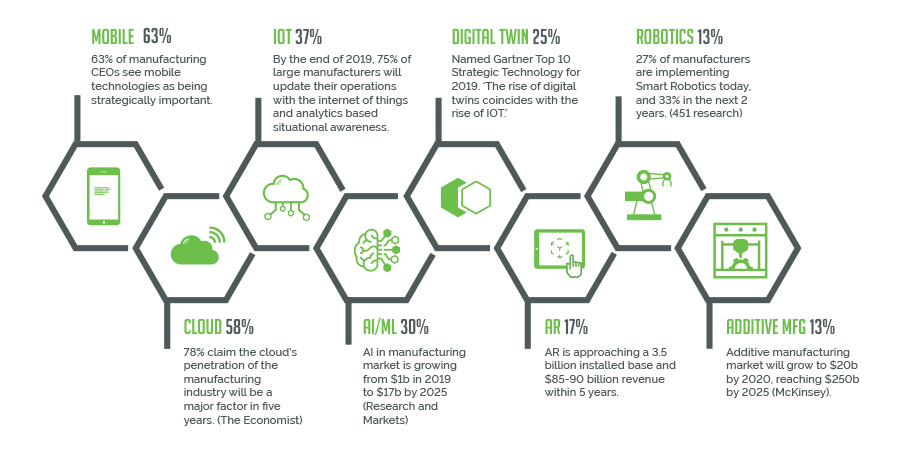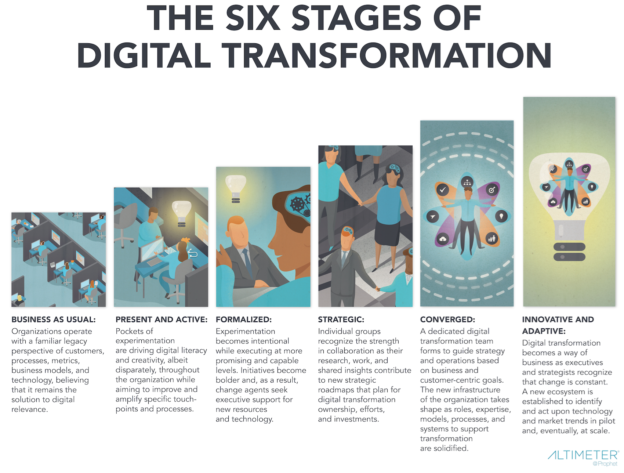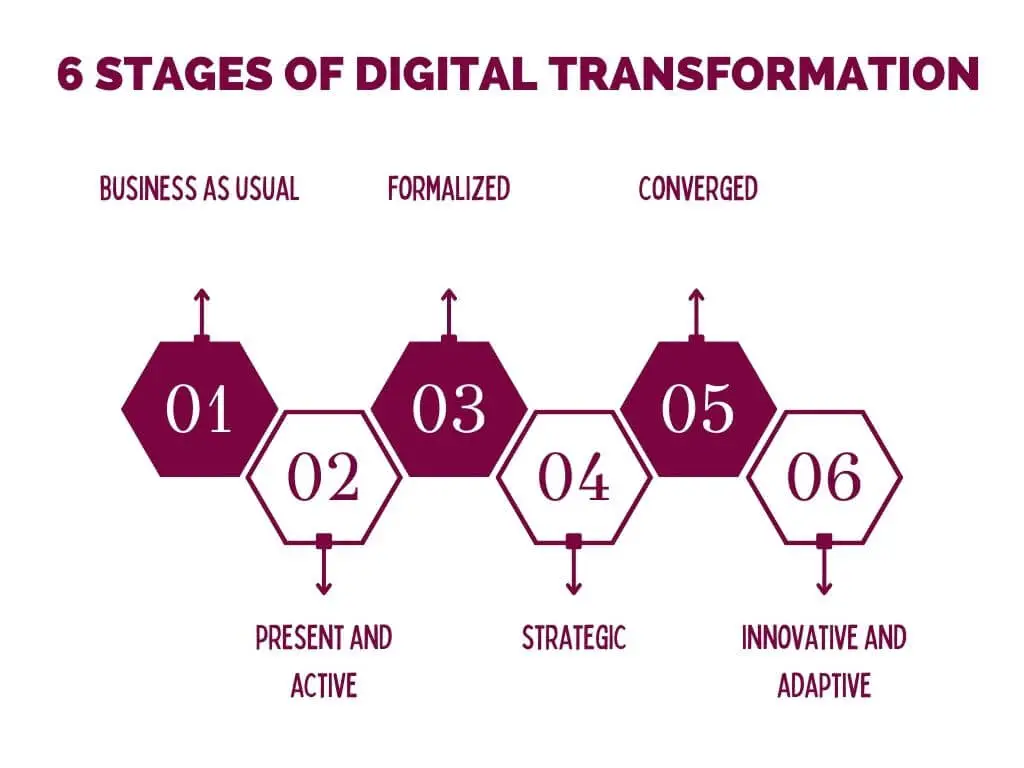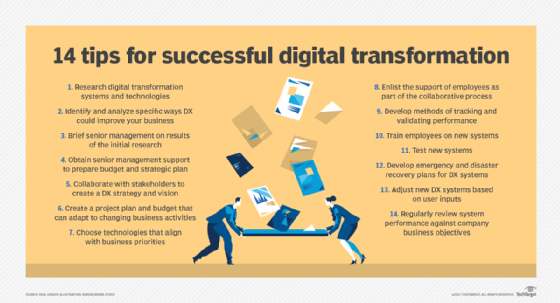Imagine a world where everything, from communication to transactions, happens electronically. This is the age of digitalization in business, where companies have embraced technology to streamline their operations and enhance customer experiences. Digitalization has revolutionized the way organizations function, leading to increased efficiency, improved productivity, and endless opportunities for growth. In this article, we will explore the overview of digitalization in business and its impact on various industries. So, fasten your seatbelts as we embark on a journey into the digital landscape of modern-day business.

Definition of Digitalization
Digitalization refers to the process of using digital technologies and tools to transform traditional business practices and workflows into more efficient and streamlined processes. It involves the integration of digital technologies into every aspect of a business, including operations, marketing, customer service, and more. Digitalization enables businesses to leverage the power of technology to optimize their performance, enhance customer experience, and drive innovation.
The meaning of digitalization in business
In the context of business, digitalization refers to the adoption and implementation of digital technologies to transform how organizations operate and deliver value to their customers. It involves leveraging digital tools, such as cloud computing, big data analytics, artificial intelligence, and the Internet of Things, to automate processes, gather and analyze data, make informed decisions, and create new business models.
How digitalization differs from digitization
Although the terms “digitalization” and “digitization” are often used interchangeably, there is a subtle difference between the two. Digitization refers to the process of converting analog information into a digital format. It involves the transformation of physical documents, images, or sound into digital files. On the other hand, digitalization goes beyond the mere conversion of analog information. It involves the integration of digital technologies into business processes to enhance efficiency, productivity, and innovation.
The importance of digitalization in today’s business landscape
Digitalization has become increasingly important in today’s business landscape due to rapid technological advancements and evolving consumer preferences. Businesses that fail to embrace digitalization risk falling behind their competitors and losing relevance in the digital era. Digitalization offers a range of benefits, including increased efficiency, enhanced customer experience, improved decision-making, and the ability to create new business models. By harnessing the power of digital technologies, businesses can adapt to changing market dynamics, unlock new growth opportunities, and stay ahead of the curve.
Key Technologies and Trends
To fully understand the impact of digitalization on businesses, it is essential to explore the key technologies and trends driving this transformation. These technologies and trends are reshaping industries and revolutionizing traditional business practices.
Cloud computing and storage
Cloud computing and storage have revolutionized how businesses store, access, and share data. By leveraging cloud-based solutions, businesses can store and access data from anywhere, enabling remote work, collaboration, and scalability. Cloud computing also offers cost savings, as businesses can avoid the need for expensive on-premises infrastructure.
Big data and analytics
The proliferation of digital technologies has resulted in the generation of vast amounts of data. Big data analytics allows businesses to extract valuable insights from this data, enabling better decision-making, improved customer targeting, and personalized experiences. By leveraging big data analytics, businesses gain a competitive edge by understanding market trends, customer behavior, and operational performance.
Artificial intelligence and machine learning
Artificial intelligence (AI) and machine learning (ML) are enabling businesses to automate tasks, enhance customer experiences, and build predictive models. AI and ML algorithms can analyze large datasets, identify patterns, and make accurate predictions. This technology is being used in various industries, including healthcare, finance, and retail, to optimize processes, personalize marketing efforts, and improve operational efficiency.
Internet of Things (IoT)
The Internet of Things refers to the interconnection of physical devices and objects with the internet, enabling them to collect and exchange data. IoT enables businesses to monitor and control operations remotely, optimize asset management, and create new revenue streams. For example, in the manufacturing industry, IoT sensors can collect real-time data on equipment performance, allowing for predictive maintenance and reducing downtime.
Blockchain technology
Blockchain technology is a decentralized and secure digital ledger that records transactions across multiple computers. It enables secure and transparent transactions without the need for intermediaries. Blockchain has the potential to transform various industries, including finance, supply chain management, and healthcare. By providing secure and traceable records, blockchain technology enhances trust, reduces fraud, and improves efficiency.
Impacts of Digitalization on Business
The widespread adoption of digitalization has profound impacts on businesses across all industries. Let’s explore some of the key ways in which digitalization is reshaping the business landscape.
Increased efficiency and productivity
Digitalization enables businesses to automate repetitive and time-consuming tasks, freeing up valuable resources for more strategic activities. By leveraging digital technologies, businesses can streamline processes, reduce manual errors, and increase overall efficiency. For example, the implementation of robotic process automation (RPA) can automate routine tasks, such as data entry, significantly improving productivity.
Enhanced customer experience
Digitalization allows businesses to deliver personalized and seamless customer experiences. With access to vast amounts of customer data, businesses can tailor their products, services, and marketing efforts to meet individual needs. Digital channels, such as websites, mobile apps, and social media, also enable businesses to engage with customers in real-time, provide instant support, and gather valuable feedback.
Improved decision-making
Digitalization provides businesses with access to real-time data and advanced analytics, enabling informed decision-making. With the ability to gather and analyze data from various sources, businesses can better understand market trends, customer preferences, and operational performance. This data-driven decision-making approach minimizes risks, identifies growth opportunities, and improves overall business strategy.
Streamlined business processes
Digitalization enables businesses to streamline their operations by digitizing and automating processes. By eliminating manual paperwork, businesses can reduce the chances of errors, decrease processing times, and improve overall efficiency. For example, the automation of inventory management through the use of IoT sensors can lead to better inventory control, reduced costs, and improved supply chain management.
New business models and revenue streams
Digitalization opens up new possibilities for businesses to create innovative business models and revenue streams. By leveraging digital technologies, businesses can disrupt traditional industries and create entirely new markets. For example, the rise of ride-sharing platforms like Uber and food delivery services like DoorDash has revolutionized the transportation and food sectors. These businesses have disrupted traditional business models and created new revenue streams.
Challenges and Barriers to Digitalization
While digitalization offers numerous benefits, businesses often face challenges and barriers when implementing digital transformation initiatives. It is important to be aware of these challenges to better navigate the digitalization journey.
Lack of digital skills and capabilities
One of the primary challenges businesses face when embarking on digitalization is the lack of digital skills and capabilities within their workforce. The rapidly changing technological landscape requires employees to adapt and develop new digital skills. Without a skilled workforce, businesses may struggle to leverage the full potential of digital technologies.
Data privacy and security concerns
As businesses increasingly rely on digital technologies to collect, store, and analyze data, data privacy and security become significant concerns. Businesses must ensure that their data handling practices comply with privacy regulations and implement robust cybersecurity measures to protect sensitive information. Failure to address these concerns can result in reputational damage, legal consequences, and loss of customer trust.
Resistance to change
Implementing digital transformation initiatives often requires changes in processes, technologies, and organizational structures. Resistance to change from employees and organizational culture can hinder the successful adoption of digitalization. A lack of buy-in and understanding from stakeholders can prevent businesses from fully realizing the benefits of digital technologies.
Cost of implementation
Digitalization initiatives can involve significant financial investments. Implementing new technologies, training employees, and upgrading infrastructure can be costly for businesses, especially small and medium-sized enterprises (SMEs). The cost of digitalization can act as a barrier for some businesses, hindering their ability to embrace the digital era fully.
Legacy systems and infrastructure
Businesses operating with legacy systems and infrastructure may face challenges when transitioning to digitalization. Legacy systems are often outdated and incompatible with modern digital technologies, making integration and implementation complex. Upgrading or replacing legacy systems can be costly and time-consuming but is necessary to fully leverage the benefits of digitalization.

This image is property of pixabay.com.
Digital Transformation Strategies
To successfully navigate the digitalization journey, businesses need to adopt effective digital transformation strategies. These strategies lay the foundation for a successful transition towards a digital-first approach.
Developing a clear digital vision
A clear digital vision is crucial for defining the desired future state of the business in the digital era. Businesses need to articulate their digital goals, identify the technologies needed, and outline the roadmap for implementation. A well-defined digital vision ensures that all stakeholders understand the direction and purpose of digitalization initiatives.
Investing in digital talent and skills
To succeed in the digital landscape, businesses need to invest in developing digital talent and skills within their workforce. This includes providing training programs, hiring digital specialists, and fostering a culture of continuous learning. By empowering employees with digital skills, businesses can maximize the potential of digital technologies and drive innovation.
Redefining business processes
Digitalization provides an opportunity for businesses to reevaluate and redefine their existing processes. This involves identifying inefficiencies, eliminating redundant tasks, and automating manual processes. By leveraging digital tools and technologies, businesses can create more efficient and agile processes that drive productivity and innovation.
Adopting agile methodologies
Agile methodologies promote flexibility, collaboration, and rapid iteration. By adopting agile approaches, businesses can quickly adapt to changing market conditions, customer needs, and technological advancements. Agile methodologies also enable businesses to test and validate ideas, make data-driven decisions, and deliver value to customers in shorter cycles.
Creating a culture of innovation
Digitalization thrives in a culture of innovation. Businesses need to encourage a mindset that embraces change, experimentation, and continuous improvement. This involves fostering a safe environment for employees to try new ideas, rewarding innovation and creativity, and promoting knowledge sharing and collaboration. A culture of innovation enables businesses to stay ahead of the competition and drive digital transformation successfully.
Successful Examples of Digitalization in Business
Several businesses have successfully embraced digitalization and reaped the benefits of digital transformation. Let’s explore a few notable examples:
Amazon’s transformation into an online retail giant
Amazon started as an online bookstore but quickly expanded into a comprehensive online retail platform. By leveraging digital technologies, Amazon revolutionized traditional retail by offering a vast selection of products, personalized recommendations, and convenient shipping methods. Amazon’s digitalization efforts have redefined customer expectations and transformed the retail industry as a whole.
Netflix’s disruption of the entertainment industry
Netflix transformed the entertainment landscape by revolutionizing how audiences consume movies and TV shows. By leveraging streaming technology, personalized recommendations, and content production, Netflix disrupted the traditional video rental and broadcast TV industries. Its digitalization efforts have allowed consumers to access a wide variety of content on-demand, shaping the future of entertainment consumption.
Uber’s digitization of the transportation sector
Uber transformed the transportation industry with its ride-sharing platform. By leveraging digital technologies, Uber created a seamless and convenient experience for passengers and drivers alike. The platform enables real-time ride tracking, cashless payments, and personalized customer experiences. Uber’s digitalization efforts have disrupted traditional taxi services and revolutionized the way people commute.
Airbnb’s revolution in the hospitality industry
Airbnb disrupted the hospitality industry by connecting travelers with hosts offering unique accommodations worldwide. By leveraging digital platforms and peer-to-peer sharing, Airbnb transformed the way people book and experience travel accommodations. Its digitalization efforts have provided travelers with more options, personalized experiences, and flexibility, challenging traditional hotel chains.
Google’s dominance in the digital advertising market
Google’s digitalization efforts have transformed the advertising industry. Through its search engine and advertising platforms, Google has created a vast ecosystem connecting advertisers with targeted audiences. Google’s digital advertising platforms enable businesses to reach their target customers effectively, optimize advertising campaigns, and measure performance in real time.

Benefits of Digitalization in Business
Digitalization offers a range of benefits for businesses that successfully embrace it. Let’s explore some of the key advantages of digitalization:
Increased competitiveness and market share
Digitalization enables businesses to gain a competitive edge by embracing innovative digital technologies. By utilizing digital tools, businesses can optimize their operations, deliver personalized customer experiences, and create unique value propositions. This ability to differentiate from competitors enhances market share and enables growth in a rapidly evolving digital landscape.
Faster time to market for products and services
Digitalization allows businesses to bring products and services to market more quickly. By adopting agile methodologies and leveraging digital technologies, businesses can shorten development cycles, iterate rapidly, and respond to customer feedback. This faster time to market ensures that businesses stay relevant, meet customer demands, and capitalize on emerging opportunities.
Greater customer satisfaction and loyalty
Digitalization enables businesses to enhance the customer experience and build stronger customer relationships. By personalizing interactions, providing seamless omnichannel experiences, and leveraging data-driven insights, businesses can better understand and meet customer expectations. This enhanced customer satisfaction leads to increased loyalty, repeat purchases, and positive word-of-mouth.
Ability to adapt to changing market dynamics
In a rapidly changing business environment, digitalization gives businesses the ability to adapt and respond quickly to evolving market dynamics. By leveraging real-time data, businesses can identify emerging trends, consumer preferences, and competitive threats. This agility enables businesses to pivot their strategies, seize opportunities, and mitigate risks effectively.
Higher profitability and business growth
Digitalization can have a direct positive impact on a business’s bottom line. By increasing efficiency, reducing costs, and optimizing processes, businesses can improve profitability. The ability to leverage data for informed decision-making and personalized marketing also leads to higher conversion rates, increased sales, and business growth.
Digitalization and Organizational Culture
Digitalization is not just about adopting technology; it also involves a transformation of the organizational culture. A digital culture embraces the mindset, values, and behaviors required to successfully navigate the digital era.
Creating a digital culture
Creating a digital culture involves fostering an environment that encourages innovation, collaboration, and continuous learning. It involves promoting a mindset that embraces change, experimentation, and adaptability. A digital culture also values creativity, risk-taking, and agility. By embedding these values into the organizational culture, businesses can facilitate the successful adoption of digital technologies and drive digital transformation.
Empowering employees through digital tools
Digitalization empowers employees by providing them with the tools and resources to work more efficiently and effectively. By equipping employees with digital tools, businesses can automate routine tasks, reduce manual errors, and enable seamless collaboration. Empowering employees through digital tools also fosters a sense of ownership, autonomy, and accountability.
Encouraging collaboration and knowledge sharing
Digitalization facilitates collaboration and knowledge sharing across teams and departments. By leveraging digital platforms, businesses can break down silos, promote cross-functional collaboration, and facilitate the sharing of ideas, expertise, and best practices. Encouraging collaboration and knowledge sharing enhances creativity, drives innovation, and improves overall organizational performance.
Fostering an agile and adaptable mindset
Digitalization requires businesses and their employees to be agile and adaptable in the face of constant change. By fostering an agile mindset, businesses can respond quickly to evolving market conditions, customer needs, and technological advancements. An adaptable mindset also allows businesses to experiment, learn from failure, and continuously improve their digital capabilities.
Continuous learning and development
Digitalization demands continuous learning and development from employees. Businesses need to invest in training programs, resources, and partnerships to ensure that employees can acquire and develop the necessary digital skills. Continuous learning and development ensure that businesses can keep up with emerging technologies, industry trends, and customer expectations.

This image is property of pixabay.com.
Future Outlook of Digitalization in Business
As technology continues to advance, the future outlook of digitalization in business is both exciting and transformative. Here are some key trends and developments to look out for:
Continued integration of digital technologies
The integration of digital technologies will continue to accelerate across all industries. Businesses will increasingly leverage emerging technologies, such as artificial intelligence, machine learning, and IoT, to optimize their operations, enhance customer experiences, and drive innovation. The future will see more seamless integration of digital tools and technologies throughout the entire business ecosystem.
Emergence of disruptive innovations
Digitalization has proven to be a catalyst for disruptive innovations that reshape industries. In the future, we can expect the emergence of new disruptive business models and technologies that challenge traditional paradigms. Startups and tech giants alike will continue to push the boundaries of what is possible, creating entirely new markets and transforming existing ones.
Shift towards data-driven decision-making
Data will play an increasingly critical role in business decision-making. As businesses gather more data and improve their analytics capabilities, data-driven decision-making will become the norm. The ability to gather and analyze real-time data will enable businesses to make informed decisions, adapt strategies quickly, and gain a competitive edge.
Greater reliance on automation and robotics
Automation and robotics will continue to revolutionize how businesses operate. Robotic process automation (RPA) will become more prevalent, automating repetitive tasks and freeing up human resources for more strategic activities. Robotics and AI-powered technologies will disrupt industries and reshape the workforce, leading to a significant shift in job roles and skill requirements.
Ethical considerations in digitalization
As digitalization becomes more pervasive, ethical considerations will come to the forefront. Businesses will need to navigate issues related to privacy, security, fairness, transparency, and accountability. Ethical frameworks and regulations will be developed to ensure the responsible and ethical use of digital technologies, protecting stakeholders and building trust.
Conclusion
Digitalization is transforming the business landscape, offering opportunities for increased efficiency, productivity, and innovation. Businesses that embrace digitalization can gain a competitive edge, enhance customer experiences, and drive growth. However, digitalization also presents challenges and requires careful planning, investment, and organizational change. By developing a clear digital vision, investing in digital talent, redefining business processes, and fostering a culture of innovation, businesses can effectively navigate the digitalization journey. The future of digitalization holds immense potential, with emerging technologies and disruptive innovations set to reshape industries and drive the next wave of business transformation.

This image is property of pixabay.com.















































